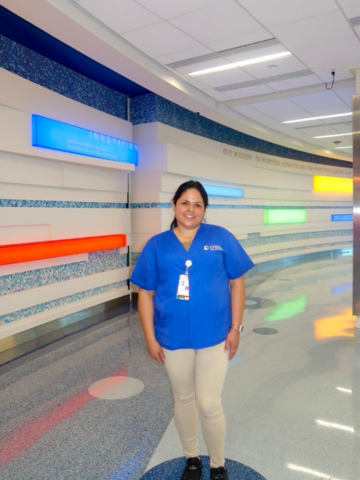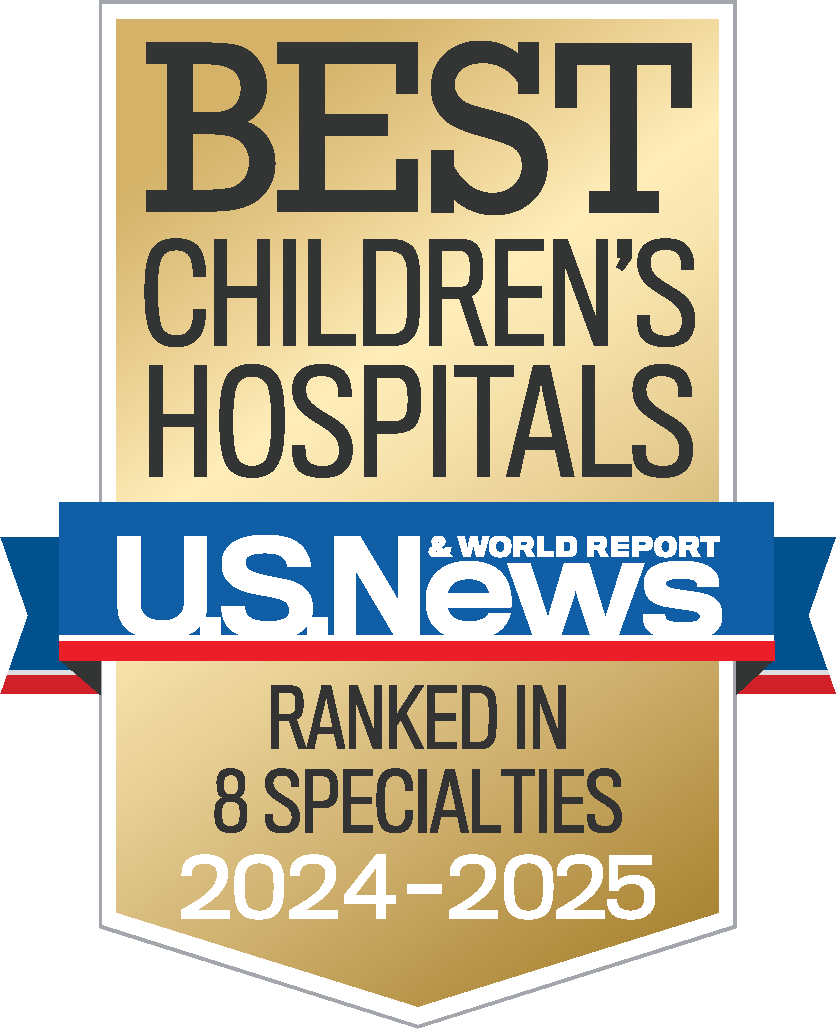Nursemaid’s elbow is one of the most common injuries in small children, and it can happen during the most innocent activities, like swinging a child by the arms or playing tug-of-war.
“There is a natural looseness in the ligaments of little kids’ elbows,” according to CHOC pediatric orthopedic surgeon Dr. Jessica McMichael. “Nursemaid’s elbow happens when the arm gets tugged or pulled, which can partially dislocate the radial head portion of the elbow.”
The injury can happen when a baby or small child is lifted by the hands, or when a child tugs their arm while holding someone’s hand. It can also happen when an object is pulled from their hand, when a baby rolls over or because of a fall.
What are Symptoms of Nursemaid’s Elbow?
Parents can look for these characteristic signs of nursemaid’s elbow in their child:
- The child stops using their arm normally or treats their arm gingerly
- The elbow appears straight and the child doesn’t want to bend it
- The child holds their arm limply and away from the body, “like a paralyzed arm”
- The palm is rotated inward, rather than facing out toward the front of the body
- The child complains of pain in the elbow, forearm or wrist
- Someone holding the child’s hand may feel a pop in the child’s wrist when the injury happens
Nursemaid’s elbow is a very common orthopedic condition treated at CHOC, according to Dr. McMichael. It is likely to happen multiple times after a child has it once.
“Nursemaid’s elbow is not threatening to the limb, but it does need to be treated,” Dr. McMichael says. “It’s okay to wait until the next morning if your child is acting okay. If your child is not acting like themselves, get it checked out.”
How to Fix Nursemaid’s Elbow
To fix nursemaid’s elbow, a medical professional will gently and quickly pop the elbow back in place. A child might feel pain for a brief moment during the procedure but should start using their arm normally within a few minutes.
If a child’s elbow pops out of place three or more times in a month, a cast may be put on to immobilize the arm and promote stiffness.
Nursemaid’s elbow can be treated by a pediatrician, a pediatric orthopedic specialist or at a pediatric emergency department. Parents should not correct the elbow themselves unless instructed by a doctor.
Dr. McMichael encourages parents to educate people who are around their child, like grandparents, daycare staff and preschool teachers, about the safest ways to lift a child, hold their hands and play with them.
Nursemaid’s elbow is less likely to occur after age four, when the elbow ligament starts to tighten up and improves with age and growth.
Get more expert health advice delivered to your inbox monthly by subscribing to the KidsHealth newsletter here.
Learn more about CHOC’s Orthopaedic and Sports Medicine Services
Our team of board-certified specialists and orthopaedics-trained staff provide a full spectrum of care for disorders of the bones, joints, ligaments, tendons and muscles.




